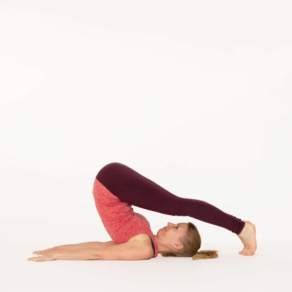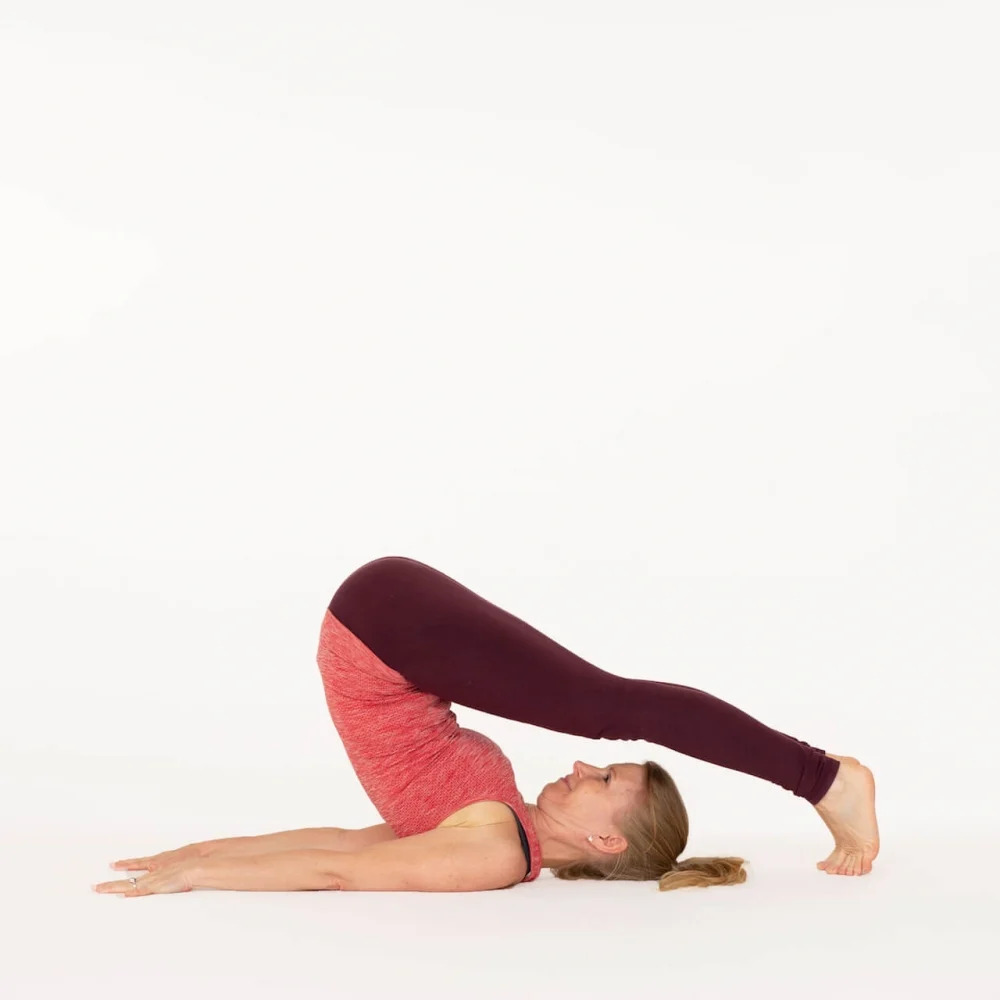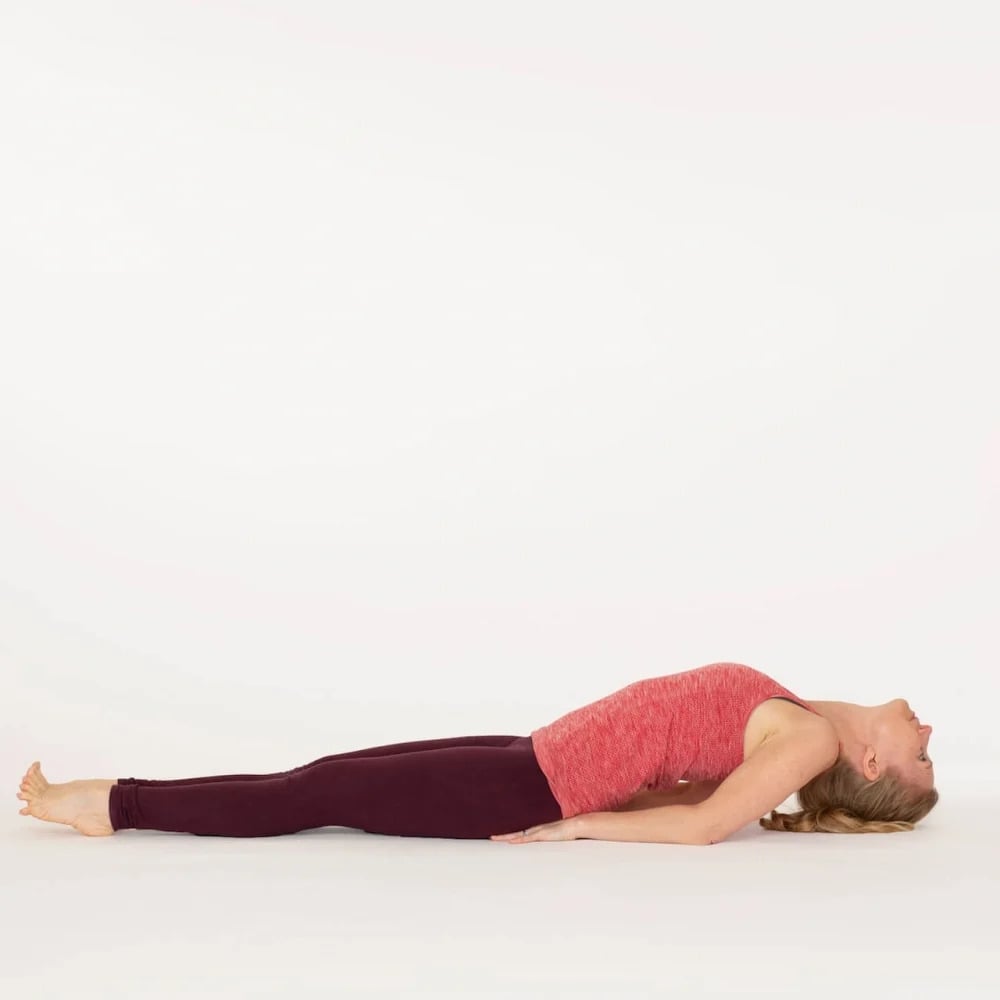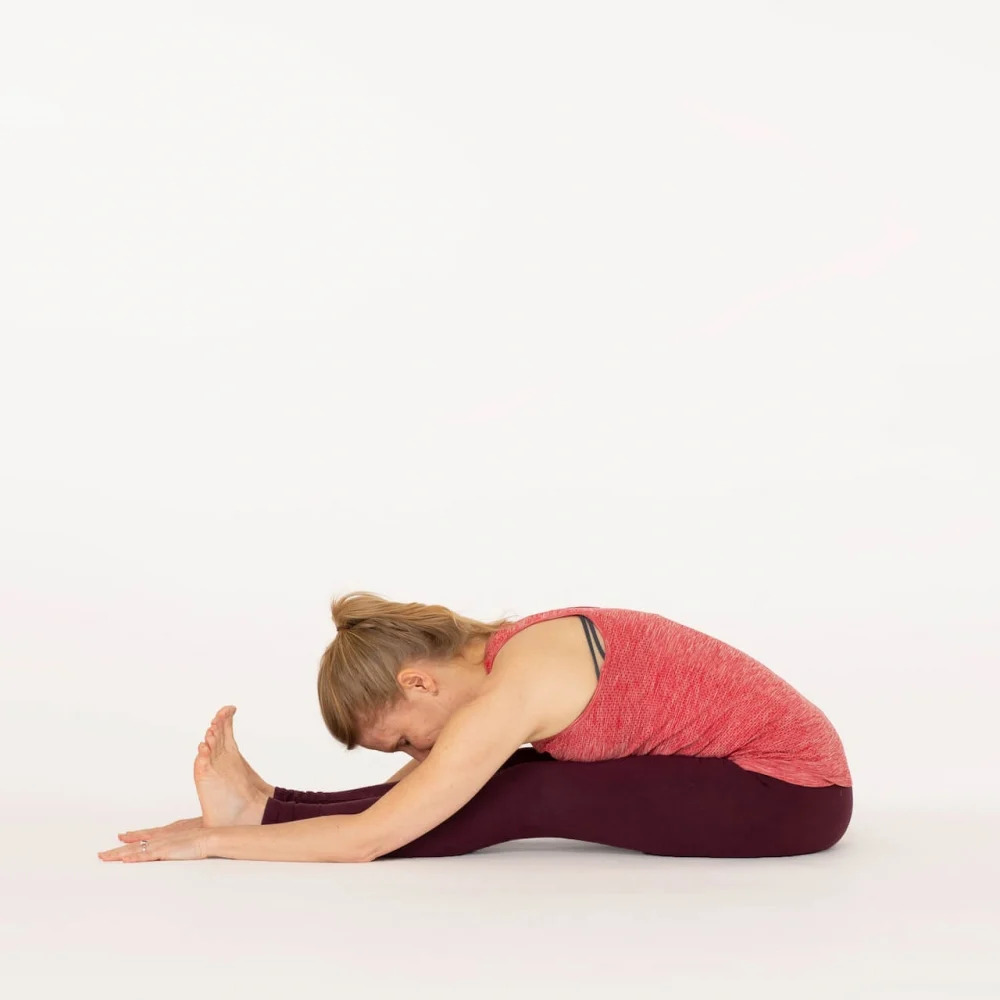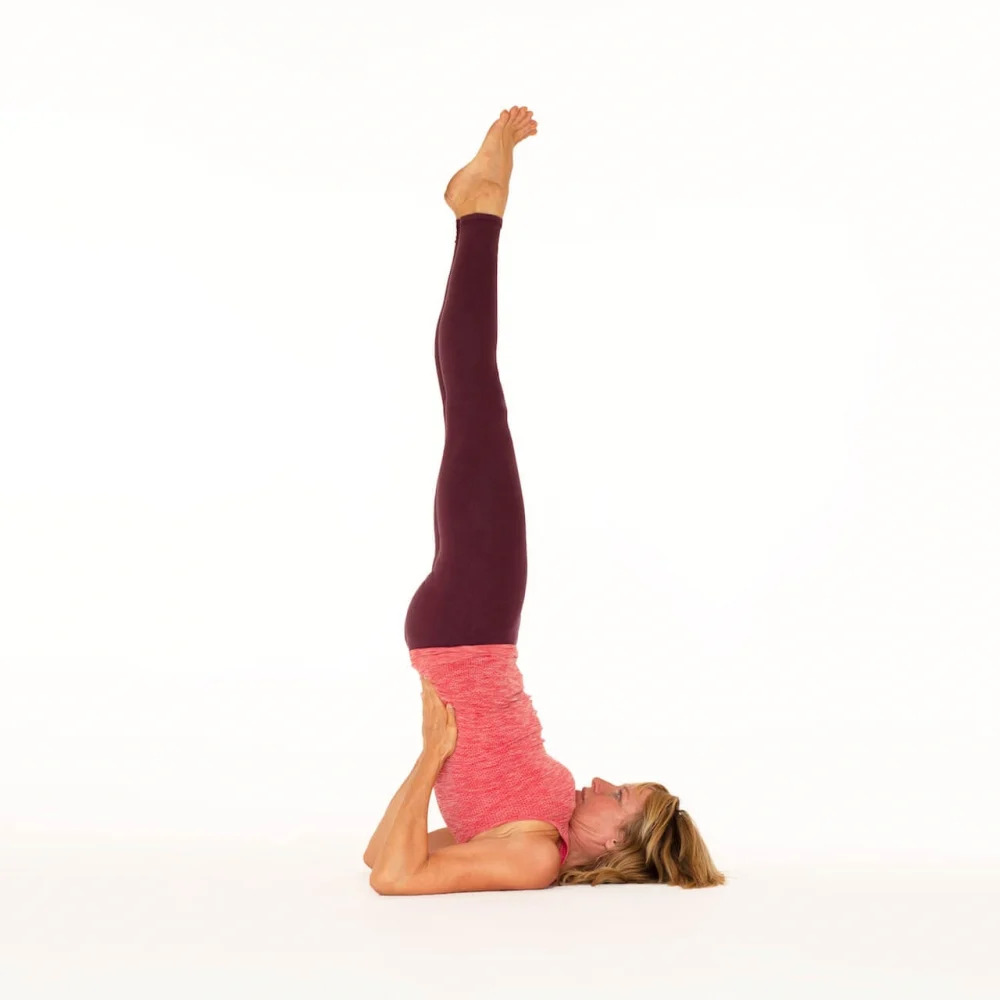Step by step
- Start from Supported Shoulderstand / Salamba Sarvangasana and lower the feet to the floor hinging from the hips.
- Alternatively, lie on your back with your upper back on a sturdy folded blanket, your head resting on the mat, so the blanket ends in the hollow of the neck. As you exhale, draw your lower belly into your spine and firm your back into the floor.
- Press your arms into the floor, inhale and lift your legs over your head towards the floor. Stretch out through the heels.
- Walk your shoulders towards each other, keep your chin slightly up and place your hands on your lower back for support.
- Press through the arms, shoulders, and feet if they are on the floor.
- Keep the spine long, tailbone reaching to the ceiling, hips over your shoulders.
- Stay for 5 to 10 breaths.
- To come out of the pose, release your hands and bring your arms back on the floor next to you, palms down and roll out of the pose as you exhale.
Beginners’ tips
- The function of the blanket is to lift the shoulders in order to keep the back of the neck from flattening too much. You may need more than one blanket – make sure they are neatly folded and stacked.
- You can keep your knees bent as you bring your legs over your head towards the floor.
- You can also leave your legs in the air or support your feet with a chair.
- It’s a good idea to have a yoga teacher help you when doing this pose for the first time.
Benefits
- Stretches the spine, shoulders and back of the legs.
- Opens the upper back and chest.
- Balances the thyroid gland.
- Stimulates the abdominal organs.
- Calms the mind and reduces stress and fatigue.
Watch out for
- Don’t turn your head when in the pose (for example to look at a teacher or video).
- There can be a tendency to overstretch the neck. The tops of your shoulders should push down into the support, try to avoid the shoulders from moving too far away from the ears.
- Make sure you keep the throat soft and the chest open.
- Avoid this pose if you suffer from any neck or upper back issues.
Variations
- If your toes do not reach the floor, you can practise this pose at the wall. Reach the wall with your feet and slowly walk your way down.
- Practise a wide-legged version coming into the pose in the same way and then bring the feet wider apart.

